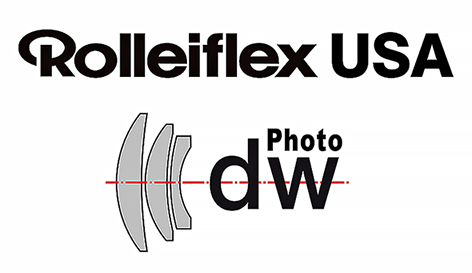My film negative 'scanner' set-up
Even though I have two digital backs for my Rollei's, I still shoot a lot of film. Film is great fun, and still has some qualities in look, color and feel that can be hard to get with digital. IMHO - The biggest downside to film is getting it scanned. I use my Rollei 6008AF and CF 528 digital back (multishot) to 'scan' my negatives. In the picture from my cell phone, you can see a quick snap shot of my set-up. I have the 6008AF on a copy stand with a light table under it. Mine is a Kaiser eVision that has the light table built in. Obviously you could use any camera and light source, but its important to use a flicker free light or one that has a high frequency ballast so you don't get dull spots in part of the frame. Typically I set my lens aperture to about f/11. This gives me sufficient DOF (mostly for focusing errors but also in case the film bends under the heat of the light) but avoids diffraction losses of smaller apertures. I used to use a bowen's illumitran slide copier for this purpose. It has a built in flash under neath and a focusing light. The flash makes for much shorter exposures and probably has higher CRI too. I guess I'm just too lazy to set it up every time. I use an enlarger negative holder to hold the film strips in place under the camera so I don't have to waste time getting them into place. I just slide the film through frame by frame. I have a Schneider enlarging lens fitted to the Rollei M39/M40 shutter adapter but sometimes just use the Rollei 90mm apo makro lens with extension tubes. In the picture, I am have set this up to scan color film (Portra 400) which has a orange carrier. The orange makes it hard to adjust color wise so I have made myself a blue filter to neutralize the carrier. I did this by shooting the orange carrier, sampling the color and making a solid layer of that color and inverting it in photoshop. I printed this blue onto a clear transparency film. Sounds hard but was very simple. I use a filter called color perfect to handle the color 'scans' after that. I can 'scan' several rolls of film in about 30 minutes this way. I think traditional scanning would be many times longer at least at the resolution I get.


Comments on this post (3)
LS
For scanning 6×6 negatives and slides I use a Reflecta MF5000. The results are very good. Braun makes a similar unit. The resolution (without interpolation) is 50M pixels. The scans show how excellent these Rollei optics are. The scanner software is from Silverfast. Their after sales service is excellent. Unfortunately Nikon stopped making filmscanners. As a consequence, the prices of the second hand Nikons went through the roof. These Nikons were a bit better than the Reflecta (4000dpi vs 3200dpi). But that difference does not really matter. The site: filmscanner.info gives excellent information.
— Henk Vastenholt
Hi Matus,
I printed a couple extra and would be happy to mail you one.
But this was set for the light source in my light table. To be perfect you may need a special one for your own light source.
Eric
— Eric
Now this is one of the more expensive scanning solutions I would guess :)
What I find really cool is the way you made the blue filter for negative films. I seriously think that it could actually be made into product. I shoot 120 film as well and sending my films to a lab (they use Coolscan 9000 which has problems with film flatness and Imacon scans are pricey). I am considering scanning my films with a camera (at least to have decent previews) and such a filter would be of great help indeed.
So – if you would produce these ‘filters’, I would be interested.
— Matus